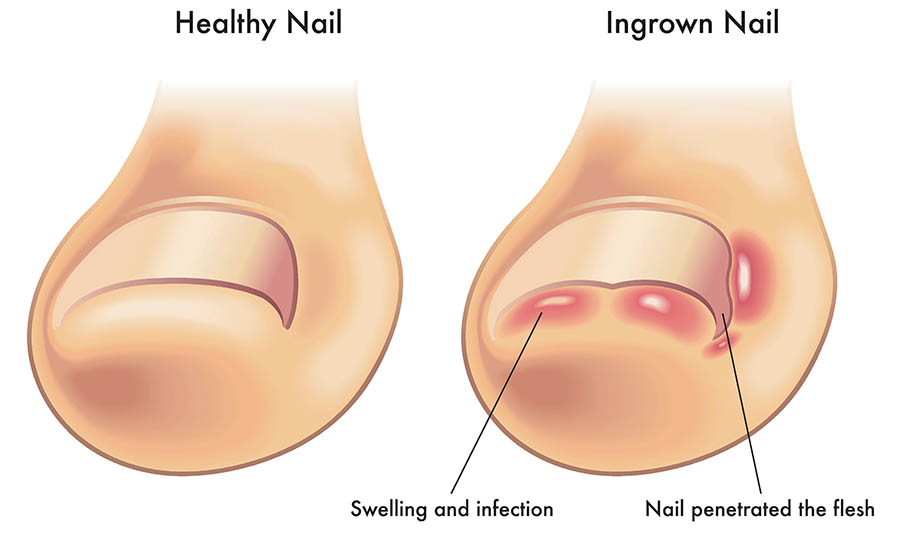Ingrown toenails occur when the edges or corners of a toenail grow into the skin next to the nail, causing pain, swelling, and sometimes infection. If you're experiencing an ingrown toenail, here are some steps you can take for treatment:
Home Remedies:
-
Soak the Foot:
- Soak your foot in warm, soapy water for 15-20 minutes several times a day. This helps soften the skin and reduces swelling.
-
Gentle Lifting:
- Gently lift the ingrown edge of the toenail using a sterile tweezers or cotton soaked in antiseptic to place it under the nail. This can help the nail grow above the skin.
-
Avoid Tight Shoes:
- Wear comfortable, open-toed shoes or sandals that don't put pressure on the affected toe.
-
Over-the-Counter Pain Relievers:
- Non-prescription pain relievers like ibuprofen or acetaminophen can help manage pain and inflammation.
Avoid:
-
Don't Cut the Nail Too Short:
- Trim your toenails straight across and avoid rounding the edges. Cutting too short or rounding the corners increases the risk of ingrown toenails.
-
Avoid Picking or Digging:
- Do not attempt to dig or cut out the ingrown toenail at home, as this can lead to infection.
Medical Treatment:
-
Professional Nail Trimming:
- If the ingrown toenail is persistent or infected, a podiatrist or healthcare professional can trim or remove the ingrown portion of the nail.
-
Oral Antibiotics:
- If there is an infection, your doctor may prescribe oral antibiotics.
-
Nail Removal:
- In severe cases or for recurrent ingrown toenails, a doctor may recommend partial or complete removal of the affected nail.
-
Laser or Chemical Treatment:
- In some cases, laser therapy or the use of a chemical to destroy part of the nail matrix may be considered to prevent the ingrown nail from recurring.
Preventive Measures:
-
Proper Nail Cutting Technique:
- Trim your toenails straight across, avoiding rounded edges.
-
Wear Comfortable Shoes:
- Choose shoes that provide enough room for your toes and don't squeeze them.
-
Good Foot Hygiene:
- Keep your feet clean and dry. Change socks regularly.
-
Foot Soaks:
- Periodic foot soaks in warm, soapy water can help prevent ingrown toenails.
-
Regular Foot Checks:
- Inspect your feet regularly for any signs of ingrown toenails or other foot problems.
If you're experiencing persistent pain, swelling, or signs of infection, it's crucial to seek medical attention promptly. Complications from untreated ingrown toenails can include infection, cellulitis, or the development of an abscess. A healthcare professional can provide appropriate treatment and guidance based on the severity of the ingrown toenail.



